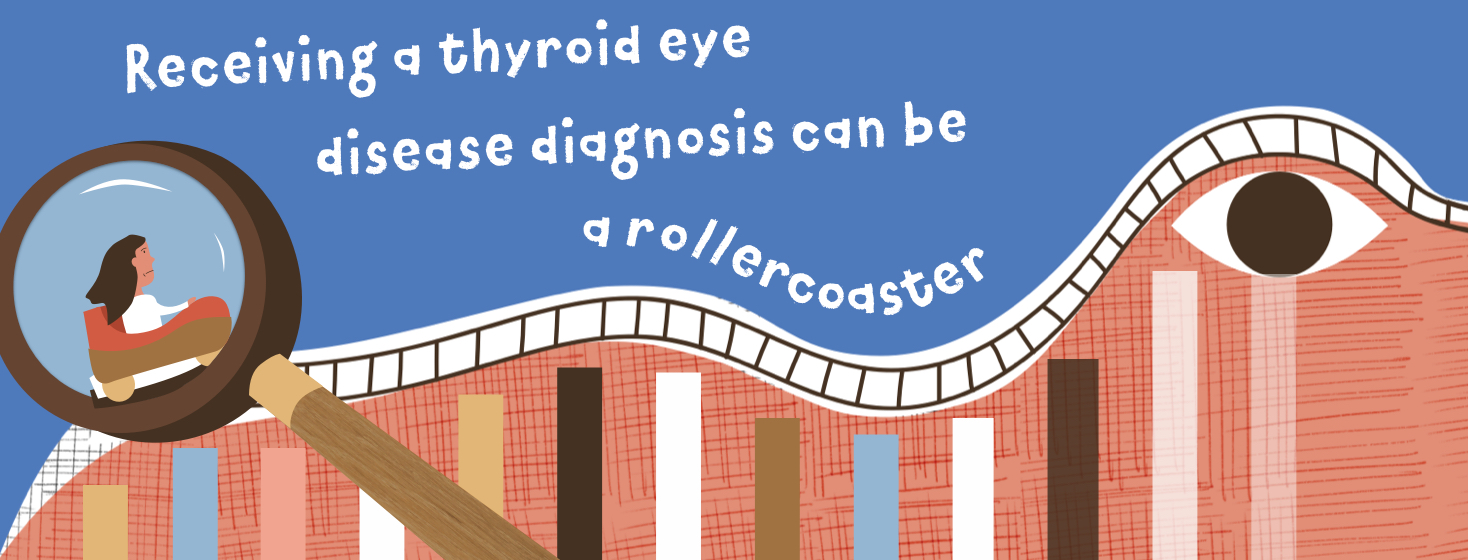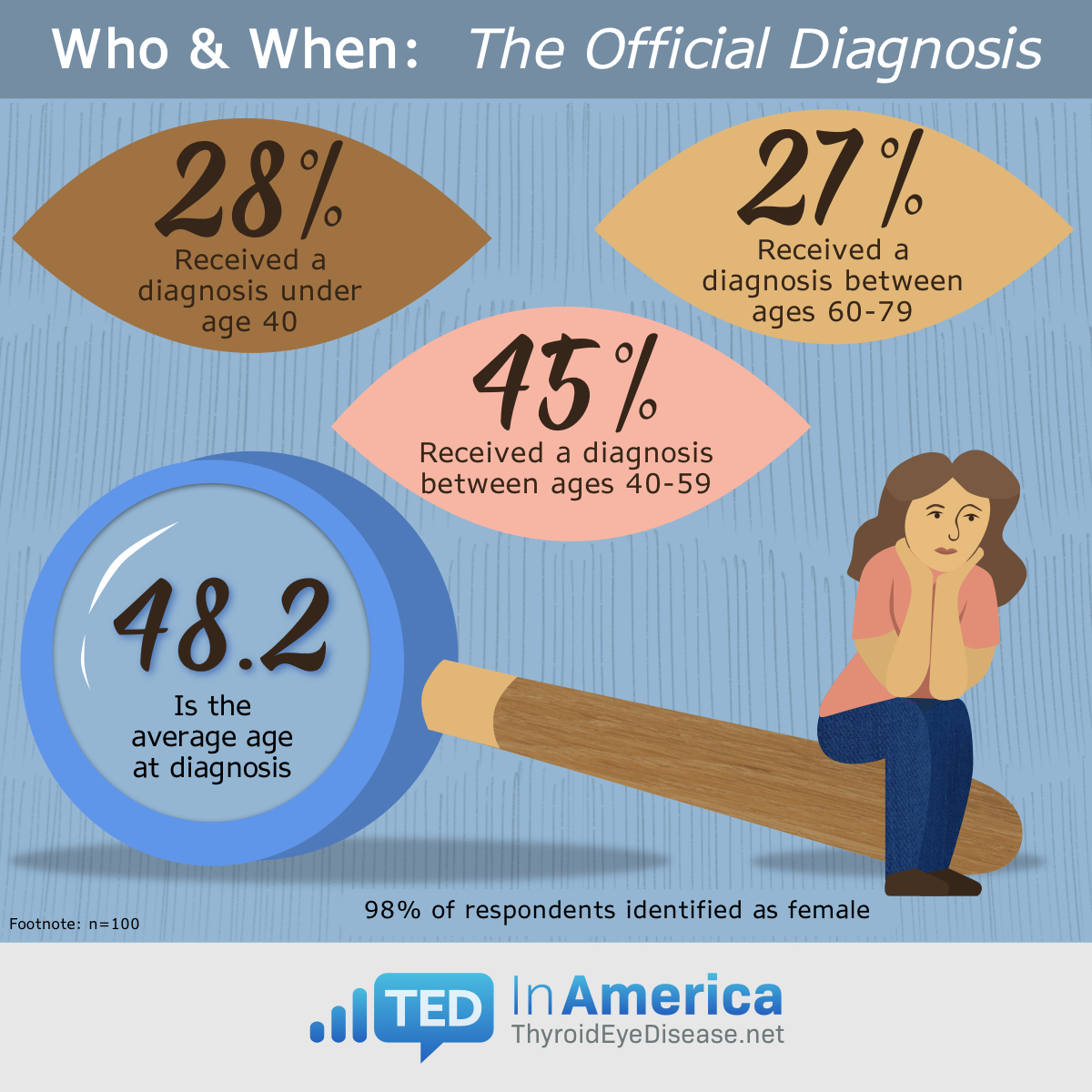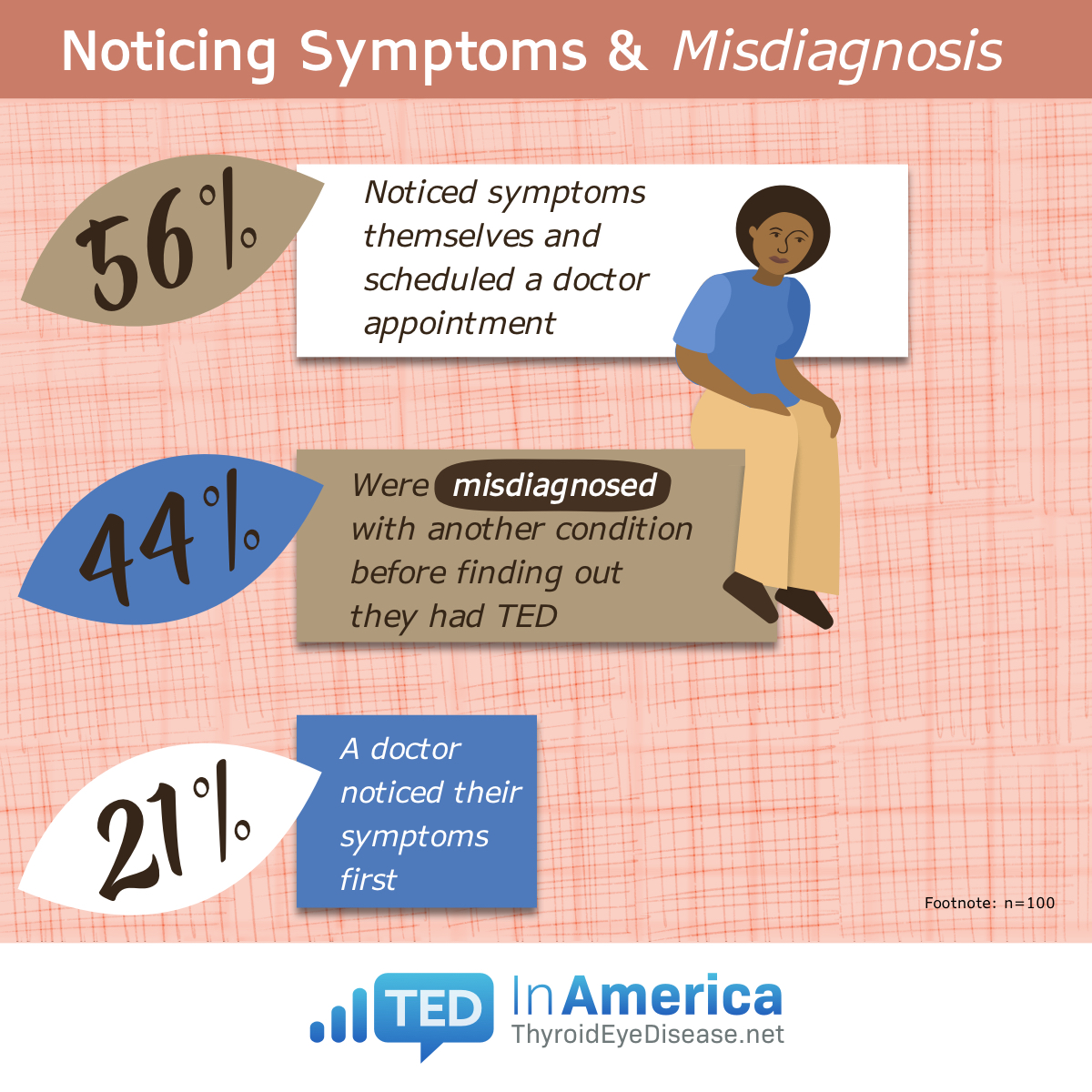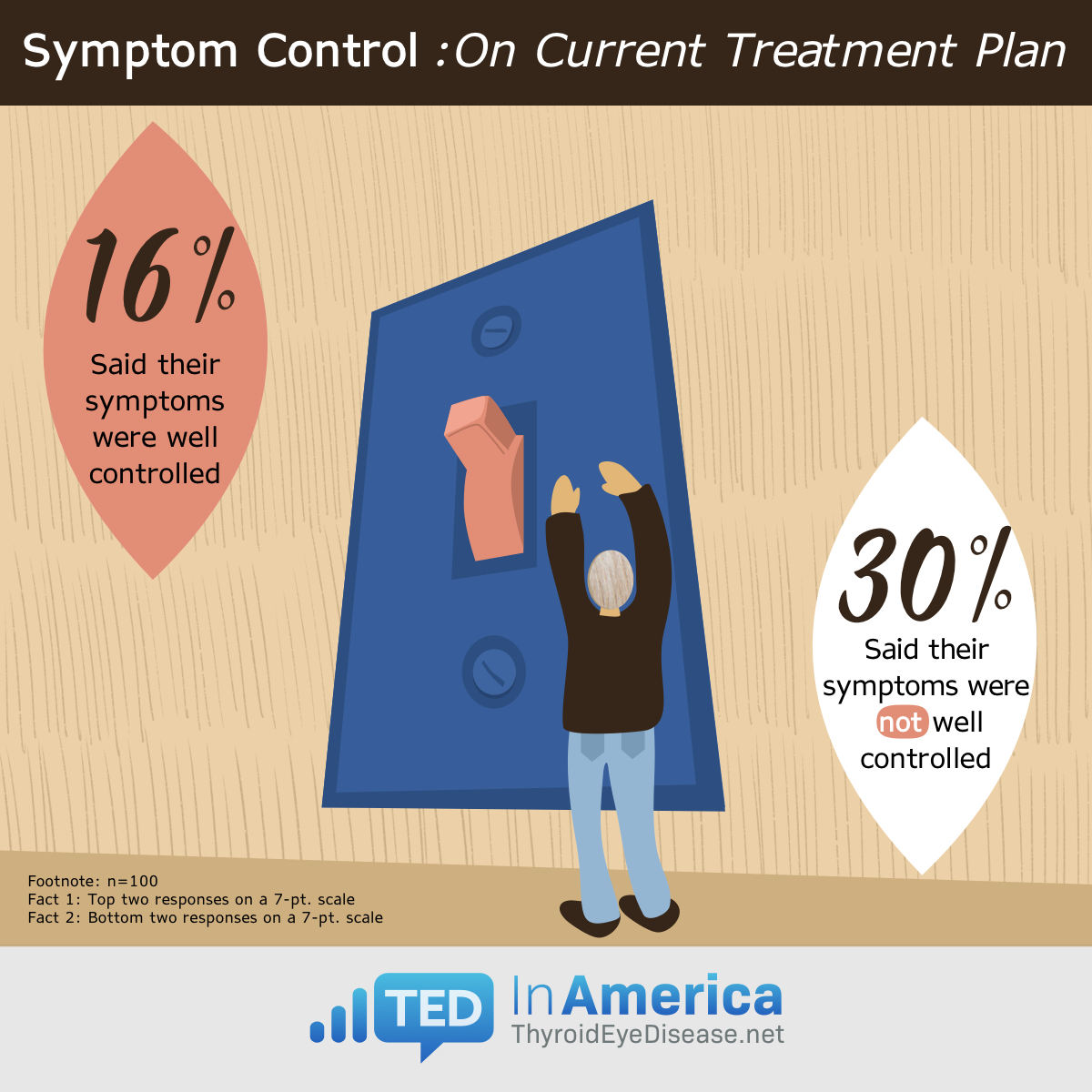Thyroid Eye Disease In America Survey: Diagnosis and Management
In our first ever Thyroid Eye Disease In America Survey, we collected information from 100 people, ages 18 and over, about their experiences of living with thyroid eye disease (TED). The survey ran from January to April 2022, and answered questions about everything from symptoms, to diagnosis, to awareness about this rare condition. We made sure that people knew thyroid eye disease can be known by other names, such as Graves’ orbitopathy, Graves’ eye disease, Graves’ ophthalmopathy, thyroid-associated ophthalmopathy, or thyroid orbitopathy.
The community on thyroideyedisease.net regularly share their journeys of getting a diagnosis, and their ongoing struggle to find more information on managing the condition. Our survey allowed us to look deeper into those areas. Here’s what we learned!
Diagnosis of thyroid eye disease
For some, the physical, emotional, and mental journey of living with thyroid eye disease begins when they have an official diagnosis. The diagnosis can lead to new relationships with health care providers, new knowledge about symptoms, coping, treatment options, and at times, lifestyle changes. Receiving a diagnosis of a rare condition like thyroid eye disease can be scary, frightening, validating, anxiety-provoking, and overwhelming.
Noticing symptoms, dealing with the possibility of misdiagnosis
Every person has a different experience when it comes to their symptoms. How they came to be diagnosed with thyroid eye disease (TED) is equally diverse. Some people began to notice their own symptoms, which prompted a visit to their health care provider. Others had a doctor notice their symptoms. Unfortunately, not all of the people in this survey received a correct diagnosis of TED right away. Some were misdiagnosed with another condition, such as allergies, allergic conjunctivitis, and chronic dry eye, to name a few.
Doctors and management of TED
People with thyroid eye disease (TED) have to manage both the physical and emotional aspects of their condition. That is why it is important to work with a health care provider for management and treatment of TED.
Three out of 10 people (30 percent) said an ophthalmologist specializing in TED is their main healthcare provider for managing their condition. There were a range of different doctors that other people said they see for their thyroid eye disease including, endocrinologists, ophthalmologists, primary care physicians, oculoplastic surgeons, and psychologists.
While the majority said they are currently seeing a doctor to help manage their TED, there were also barriers to treatment reported. Not many people said they felt their TED symptoms were well controlled.
Different journeys, one community
Everyone with thyroid eye disease has a different diagnosis and management journey. Some people are in the active phase, others in the inactive phase. Each person may experience different symptoms of TED or find that one treatment plan works better for them than another.
Regardless of where you are in your thyroid eye disease journey, this community is here for you. Click on the button below to share your TED journey with the community or discuss symptom management with other people with thyroid eye disease.
The 1st Thyroid Eye Disease In America Survey was conducted online from January 2022 through April 2022. The survey was completed by 100 people.




Join the conversation